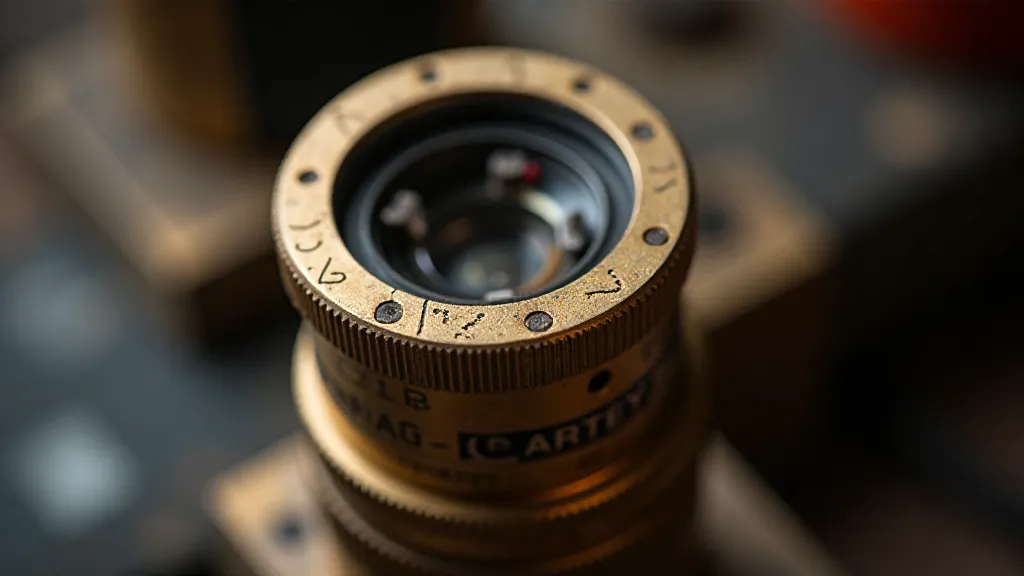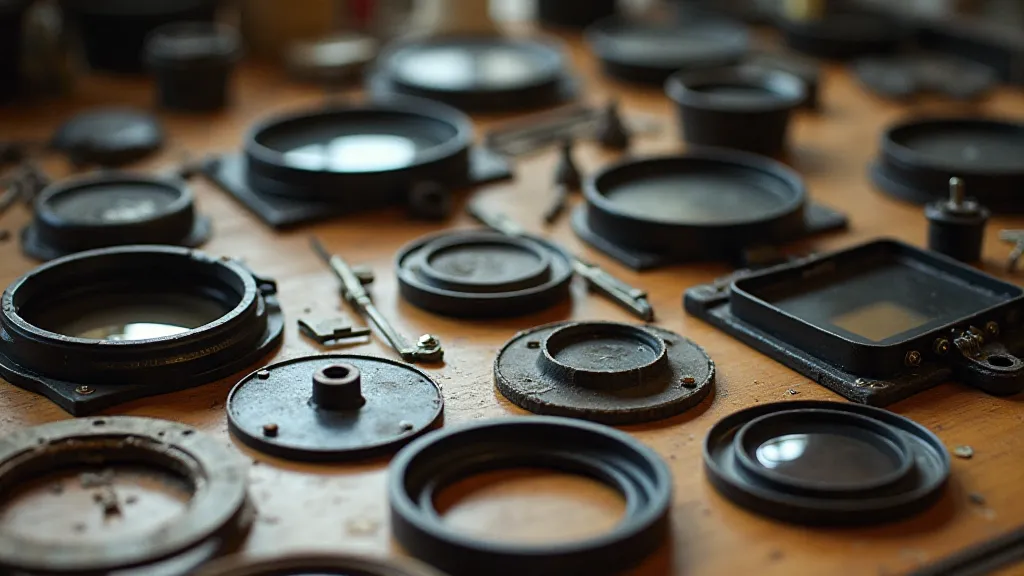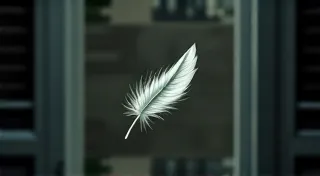The Focusing Wheel's Philosophy: Patience, Precision, and the Writer's Craft
There's a certain weight to holding a vintage camera. It’s not merely the physical heft of brass and glass, but a sense of history, of countless moments captured and preserved. As a hobbyist specializing in viewfinder restoration, I've come to understand that these instruments, especially older, manual focus models, aren’t just tools for taking pictures; they are teachers. The deliberate process of focusing—that slow, considered rotation of the focusing wheel—whispers profound lessons about patience, precision, and the quiet commitment required for both photography and, surprisingly, the writer’s craft.
My fascination began with my grandfather’s Leica IIIg. It sat, shrouded in dust, in a forgotten corner of the attic. He was a photojournalist in the mid-20th century, his work documenting a world brimming with hardship and hope. He’s gone now, but holding that camera, feeling the smooth turn of the focusing wheel, allows me a fleeting connection to him, to his perspective, to a time when photography demanded a level of engagement almost unthinkable in our age of instant gratification.

The Dance of Light and Focus
Modern cameras autofocus with startling speed. A fleeting glance, a press of a button, and the image is sharp. But the vintage camera demands participation. You're not merely pointing and shooting; you're entering into a partnership with the lens. You must learn to interpret the subtle clues: the softening of details, the gradual convergence of lines. It's an exercise in observation, a honing of your visual acuity. And the viewfinder itself, often a complex system of mirrors and prisms, adds another layer of complexity. The restoration process – cleaning the glass, recalibrating the mechanisms – is a delicate dance with time, a chance to breathe new life into a silent observer of history.
Consider the early viewfinders, those housed within bulky box cameras. Their construction was often simple, but their functionality was critical. They weren’s perfect—parallax error was a constant concern—but they provided a window onto a world that photographers of that era embraced wholeheartedly. Restoring one of these viewfinders isn't just about correcting an optical flaw; it’s about preserving a connection to that ingenuity and resourcefulness.
Patience: The Photographer’s Virtue
The speed of modern life encourages impatience. We want results *now*. This translates into photography, too – a constant chase for the “perfect” image, often at the expense of truly *seeing* the scene. But focusing a vintage camera forces you to slow down. There's no instant gratification. You turn the wheel, observe, adjust, and repeat. This deliberate pace cultivates a patience that extends far beyond the photographic process.
As a writer, I find this patience invaluable. The drafting process is often a slow, painstaking affair. There are days when the words simply won’t flow, when frustration threatens to overwhelm. It's in those moments that I think back to the feel of that focusing wheel under my fingertips, the quiet persistence required to bring an image into focus. Writing, like photography, is about seeing—seeing clearly, observing deeply, and then translating that vision into a form that others can understand.
Precision: A Matter of Detail
Precision in photography isn't just about achieving sharp focus; it's about understanding the nuances of light, aperture, and composition. It’s about recognizing the impact of even the smallest adjustments. Similarly, in viewfinder restoration, it’s about meticulously cleaning each mirror, aligning each prism, recognizing the interplay of optics that create the final image. A tiny speck of dust, a minuscule misalignment—these can significantly impact the quality of the view.
Writing demands the same level of precision. A misplaced comma, a poorly chosen word, can completely alter the meaning of a sentence. It’s about paying attention to the details, refining your language, and ensuring that every element contributes to the overall effect. It's a continuous process of editing, revising, and honing your craft until the message is conveyed with clarity and impact. The best writers, like the finest photographers, are masters of their tools, relentlessly pursuing perfection in every detail.

Commitment: Beyond the Button Press
Restoring a vintage viewfinder isn't a quick fix. It can be a time-consuming and challenging endeavor, requiring specialized tools and a deep understanding of optics. It demands a commitment that goes beyond the superficial—a willingness to invest the time and effort necessary to truly understand the instrument and its history. Similarly, using a vintage camera, particularly one that requires manual focus, is a commitment to a more deliberate and engaged photographic experience. You are not just taking pictures; you are participating in a tradition, connecting with a lineage of photographers who came before you.
Writing, too, requires a deep commitment. It's not enough to simply have an idea; you must be willing to work tirelessly to develop it, to shape it, to bring it to life. There will be setbacks, moments of doubt, and times when you feel like giving up. But it's the unwavering commitment—the belief in your vision—that will ultimately carry you through.
The Viewfinder’s Legacy
Each vintage viewfinder I restore carries a story. It’s a tangible link to a time when photography was a more deliberate, more thoughtful process. It’s a reminder that true artistry requires patience, precision, and a deep commitment to the craft. And as I rotate that focusing wheel, I am not just adjusting the optics; I am tuning into a philosophy, a way of seeing the world—a philosophy that applies equally to photography and to the writer’s journey.
The legacy of these antique cameras and their viewfinders is not simply about capturing images, but about cultivating a deeper connection to the world around us, and to the art of creation itself. It is a lesson whispered by the brass and glass, a quiet instruction in the enduring value of patience, precision, and the unwavering pursuit of clarity.






